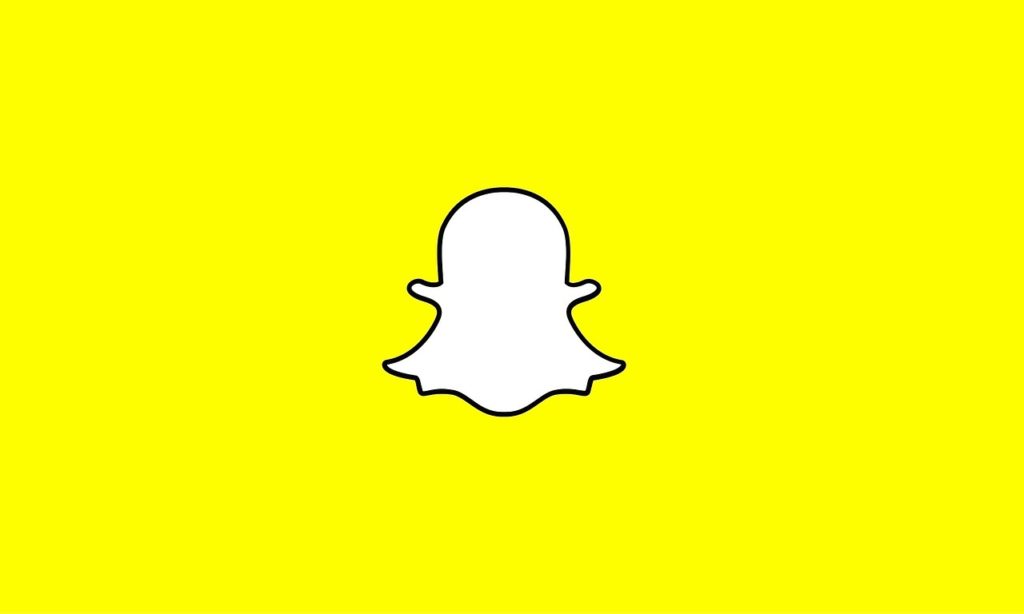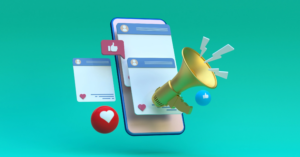Brad Post, Create the Movement, host
Jon Corra, Snapchat
Jon’s Background
Brad Post, Create the Movement, host: Welcome back to Create the Movement podcast. This is Brad Post. And I’m really excited today to introduce a celebrity, a good friend of mine as well, He is the inventor of Snapchat. Is that right, John Corra?
Jon Corra, Snapchat: Well, if you ask my local newspaper, yes. I am indeed the inventor of Snapchat. I stay humble by driving a 15-year-old car just like everyone else.
BP: Exactly. Can you share that story real quick?
JC: So, what happened was, I was volunteering at a Comic-Con here locally, where I went I went to undergrad – West Virginia University at Parkersburg. They were having their first ever Comi-Con, and they wanted some Snapchat filters for the event. And you know what? I love doing that. I’ll make them and donate them to the event.
So, the local newspaper came by, and they interviewed me. They were like, “What’s this Snapchat thing you’re talking about?” And I tried to explain to them how filters work. And the person who was doing the interview was older, and not big on social media. He didn’t quite understand how Snapchat worked, whatsoever.
When the story ran in the paper the next day they listed me as the inventor of Snapchat. And that’s been an ongoing joke ever since. That I just happened to invent this service, that millions of people use, from Parkersburg. And I live a humble life just like everyone else.
BP: That’s awesome. Jon, and I, have been friends for five years. Friends and business acquaintances. We’ve worked with businesses together. He’s with Jan Dils Attorneys at Law doing some awesome work for veterans up there, and Fight4vets.com. Correct, Jon?
JC: Yes, sir. I think it just redesigned, didn’t it? Some awesome web-hosting company did that for us.
BP: It sure did. We are very proud of it. Yes, we redesigned that and launched last week. So, it’s looking good. John, can you share a little bit about yourself and your history?
JC: Sure. You mentioned that we’ve been friends for five years. And I’ve actually been with the company, Jan Dils Attorneys at Law, for almost six. Actually, March 21st will be sixth-year anniversary with the firm. So, it’s hard to believe that I’ve been doing this that long.
BP: Happy Anniversary! That’s exciting.
JC: Thank you. I appreciate that. It’s been weird because I came here when I was still in graduate school. I was working on my master’s degree in corporate education from WVU. And it’s horrible story. The place I worked for previously, they shut down on my birthday. So, I was out of work on my birthday. And I had no idea what was happening. And I applied. Jan’s been in this community for her whole life. But, her firm’s been around since ‘94. So, I knew of the firm. I wasn’t quite sure what they did. I just happened to have applied one day. Got a call back. Started working doing what we then called client-status updates for veterans.
And then, I approached her one day, I’m like, “We should probably do more stuff on social media.” And started out it started out as a part-time position for me. And it just kind of grew. Since then, I’ve actually become full-time in social media and community outreach. And it’s really neat because I’ve seen how much it’s changed in the past five to six years. How it’s grown as a whole. If I think back to when I first started doing social media in 2011; we didn’t even have cover photos on Facebook. And no one did Facebook advertising, hardly. It’s just all different now. And that’s what I like about it. How much it changes. I think what’s neat about using social media for business.
BP: If I remember correctly Jon, when you and I first became friends, you weren’t even on Facebook. Is that correct?
JC: You are correct. I was a late-bloomer to Facebook. The Snapchat story will parallel that as well. I studied corporate communications in college. And I studied how, if anyone is familiar with communications at all, social penetration theory. And how social media essentially destroys that. So, all through college I was really against social media as a whole. I didn’t want any part of it. I thought it was going to ruin our country and ruin our society. And it still may do that. I’m not discounting that whatsoever.
But I learned shortly after, using this for business is amazing. And when I approach social media with the marketing mind, instead of the communications mind, or social mind. I’m like, “Well, it can be used for a lot of good instead.” So, that was one of the great things about changing my approach to it.
And I joined Facebook in 2012. Which people probably think I’m crazy for that because it’s been around since 2004. Everyone else was on it way before I was. But, I was a late bloomer. I’m glad I’m on it now, but at the time I was very hesitant.
BP: Giving you a hard time, “Jon, you’re the social media person over at Jan Dils, and you’re not even on Facebook.” Of course, they probably a sly remark to that.
What is your approach to Snapchat? I know you said you’re a late bloomer.
Snapchat and Filters
JC: I think my original fears about Snapchat are probably what a lot of your listeners are having issues with Snapchat, as well. I thought it was kind of like, if you remember the old service. It may still be around, but like Chatroulette. I thought that’s what Snapchat was. “No. I don’t want to be on that. It’s too adult-oriented.” I thought that’s all it was. However, my sister, who’s way cooler than I am, and she’ll tell you that also. Even from her car, her clothes, she always does things cooler than I do. She was on it. “No, Jon. You’re wrong. That’s not what it’s about.”
She actually talked me into downloading it one day. And I remember that I was bored, and sitting in a Taco Bell drive thru. Which, honestly, you can find me in a Taco Bell drive thru most days. I was bored, and I’m like, “I’m going to play with app real quick.” So, I took a picture, and then I started swiping through the filters. And I’m like, “Wait. Taco Bell has their own filter. I’m here. They know I’m here and they have a filter just for people who are at the restaurant.”
And that’s what sold me on Snapchat – the filters. And that’s why I’ve gotten so much use out of it now from a marketing standpoint. Filters, in my mind, especially the geofilters, are the coolest thing ever.
BP: That’s awesome. Geo-filters, ties in the next question, what kinds of things do you think our listeners could immediately start using for their business? Create a geo-filter? You created one for the Operation Transportation. Is that correct?
JC: Yeah. And just to give everyone a lesson on Snapchat. A lot of people know the things that will make your face look silly. Those are called ‘lenses.’ Some companies sponsor those. But unless you’re GE or NBC Universal, or something like that, that’s probably not in your budget, because it’s so expensive. We’re talking about anywhere from hundreds of thousands of dollars to millions. Depending upon how elaborate you go. So, those are lenses.
Then you have ‘filters’ which are broken down into two different types. You have ‘geofilters’ and ‘on-demand filters.’ Taco Bell’s filters was an on-demand filter, not a geo-filter. So, a geo-filter is, let’s say you go to your office in Tulsa and you start looking around, you take a picture, and there’s a Tulsa, Oklahoma filter. That’s a geo-filter. It’s community based. No one pays for it. It’s just to celebrate the community that you’re in.
I made one here for Parkersburg, West Virginia. You can take a photo and put our Parkersburg filter on top of it and everyone can see where you were that day. It’s kind of cool because it’s like a visual scrapbook of your life. It’s live.
BP: And you can see that picture on our blog entitled, ‘A Snapchat Story by Jon Corra.’ Correct? The one that has ‘Since 1810?’
JC: Yes, exactly. That’s the one that I designed. And what’s nice about that one is the photo was taken from the inspiration for the filter. It’s our flood wall, which all cool cities have floodwalls. And it says ‘Welcome to Parkersburg.’ I happened to be out on a boat that day and, “Wow, I’m going to take a picture for inspiration.” So, it’s very meta if you will. That’s a geo-filter.
An on-demand filter is one that you pay for. So, an on-demand filter can be about your business. It’s still based off of a location, but on-demand filters are where you can actually pay to have your logo on there. Or, pay to promote something through Snapchat. And that’s really what I use the most now. It’s still fun to make a community filter, but at the end of the day you can’t really sell your products on that because you can’t logos or anything.
An on-demand filter is what most people use now to market. And the way it’s set up is you can design it, and then you go through Snapchat’s upload process, which is very simple. Then you pick an area in which you want that to be used. And you set it through a geo-fence. It’s real simple. And if anyone ever needs help with it I’ll be happy to walk them through it. Then it exists for whatever period of time you set it for. Generally, I do three hours. And I’ve used them for several different events. Not just for the firm here, but sometimes I use them for fun. For birthday parties, or, for instance, one day we had a coworker who was leaving the firm so we made a ‘Goodbye’ demand filter for her.
It’s really a cool way to do something that’s a little different on social media. Everyone’s on Facebook, and everyone’s on Twitter. But Snapchat’s definitely new and exciting. And I think that if a lot people see that you’re using it, they’re going to realize that you’re a brand that’s different than everyone else.
BP: That’s good. What’s the one thing that’s really exciting to you in your business right now? I know you’re doing a lot of things for veterans. And actually, Jon, if you could, let us know some of the things that you’re doing for the veterans through Fight 4 Vets and Jan Dils.
JC: At our firm, we do veterans disability, we do social security disability, and personal injury. Those are our three areas of focus. For veterans it’s something right now where it’s really in demand, and one of the things that you hate to be in this business because so many veterans need assistance that aren’t getting it right now. It boggles the mind how many veterans aren’t aware that they can even get disability compensation.
What I’ve learned through my blog, which you also host, which is VeteranDisabilityBlog.com, is that there is a lot of misconception out there about PTSD, for instance. A lot of people will let those misconceptions keep them from either filing for disability benefits, or even get the treatment that they need.
I know one of my most popular blogs ever has to do with ‘Can a veteran own a gun if he or she has PTSD?’ Most people think that they can’t. And actually, it’s not true. There’s different levels, and I go into all the detail about that. And I’ve gotten so many calls from veterans that have said that that blog has helped them more than they ever realized. Because they can now get treatment because they’re not afraid of losing their gun rights.
So, it’s nice to be able provide that type of insight to people, and even help them out more than I ever realized that I could.
Community Outreach
BP: That’s exciting. I know you talk a lot about community, and some of the things that you did in the community. Could you give us a recap of things you guys did in 2016?
JC: Sure. As community involvement is one of the most important things for any business right now. We know our customers demand it, and it’s honestly one of the things that gets us the most ‘likes’ on Facebook, or the most re-tweets on Twitter, is anytime we’re involved in the community.
Jan’s a really big fan of the mid-Ohio Valley. When she graduated law school she could have gone anywhere to be an attorney, but she chose to stay where she grew up. It’s something that we feel so connected to – the mid-Ohio Valley – that we wanted to give back.
One of the ways that we’ve done that in the past, and continuing to go forward, is giving back to veterans. We’ve had the Walk for Vets a few times in the past where we raise money for local veterans charities. And that’s through Jan’s foundation – The Walk for Vets Foundation.
But this year, 2016, we did something a little different. We helped establish a group called Operation Transportation. And what that is is a community initiative where it’s a lot of other businesses are involved in raising money for veterans to receive bus passes through our local transit authority. And it started back in September 2016, and it was successful within just a few months. We raised almost $4000 to provide bus passes for veterans here.
BP: Wow.
JC: Honestly, we just got a few people on board. We did some fundraisers at Lowe’s. Businesses like ours donated as well. We had our annual spaghetti dinner the day before Veterans Day. That raised, on it’s own, $1000. People in the community gave so much that night. The program is already in place. I actually have one of the passes here on my desk that veterans can use to get free bus rides, essentially.
Normally, a bus pass here in Parkersburg would cost $32 per month. They get them for free now, as long as they pass our application process, and they can ride as much as they need to. We find that it’s such an issue in this community, and probably yours too, probably in any area in the United States right now, veterans don’t have access to transportation. And this way they can go to their doctor’s appointments. They can come see us if they need help with a VA disability claim. Or, they can even go to the grocery store now because they have access to that transportation.
BP: That’s great. And you said that it started when in 2016?
JC: September.
BP: September. Okay.
JC: So, it’s not even six months old yet.
Best Business Advice Ever Received
BP: No, kidding. You’ve already raised $4000. That’s great. Moving on, what’s the best business advice, Jon, that you’ve ever received?
JC: That’s a good question. Honestly, that would have to go back to our leader here, Jan. Jan’s jingle is that she ‘doesn’t take ‘no’ for an answer.’ And before I worked here, I was like, “That’s just a jingle. That’s just what she says. It’s something she paid an advertising company for.” And it turned out I was wrong. A few years ago we were just talking, she and I. I asked her, “Jan, how did that slogan come about?” And she said that it actually came from her youth and her childhood when people would tell her that she wouldn’t be able to do things. One time it was that she couldn’t make the high school basketball team. It turns out that she ended up becoming an All-State Champion because her efforts towards that. At the time, it’s hard to believe that 1994 was 22 years ago, but, for her being a female attorney, opening her own firm, was somewhat unheard of. Especially here in West Virginia. She had a lot of doubters. And she just said, “They always said ‘no,’ but I had to prove to them why I couldn’t let them say ‘no.’”
So, that’s always been a thing. Just because of who you are, doesn’t mean that you can’t be successful. And that applies to me, too. I went to graduate school. I never felt like someone from West Virginia could be anything. And just to prove that, don’t let these things hold you back, essentially, is what I got from that. Don’t let people’s opinions hold you back.
BP: That’s really good, Jon.
JC: Thank you.
Jon’s Recommended Books and Podcasts
BP: Any books that you would recommend to our listeners? Not booze, but books.
JC: Sure, books. There’s actually several. I’ll only give three. I’ve actually just recently discovered Audible. Once again, I’m a late bloomer. It’s the greatest thing in the world. The first book that really caught my eye for marketing, and I don’t think a lot of people know this book, or this author. The book is called ‘Obsessive Branding Disorder,’ or OBD. It’s by a gentleman named Lucas Conway.
It approaches marketing like I do. About how much stuff is integrated now with each other, and how there’s so much cross-promotion in our mainstream society now. You even see it with Geico, for instance. Geico does commercials with other companies now to show how they’re partners. And that book really hit on that for me. Honestly, it came out about 11 years ago, so it was somewhat ahead of the curve. But, it’s really a great read. And it’s a quick read, too. Or, in my case, a quick listen. But it’s a great book, and if you get a chance, pick that one up.
This is going back to my communication background. It has to do with social media. A great author, Jon Ronson, last year published a book called, ‘So You’ve Been Publicly Shamed.’ It’s about how people approach social media, almost how they did to public shaming back in the day, where you would find ways to destroy people on social media. He gives the case of Justine Sacco, who I’m sure a lot of people don’t know who she is off of the top of their head. Who made one bad comment on Twitter, and it’s followed her the rest of her life. He touches briefly in that book about how brands have messed up, too. There’s been a few brands here, recently, who’ve made horrible mistakes on Twitter. It’s always Twitter, too. It’s never Facebook. It’s always Twitter people make mistakes on. For instance, 9/11. There was one brand, I can’t remember off of the top of my head, that shouldn’t have posted what they did about 9/11. It was like a cookie company, or something. He goes into detail about.
The last book I want to recommend, this is completely different, but it goes back to my discussion with Jan, the book called, ‘Why Not Me?’ by actress Mindy Kaling. It has a lot to do with confidence. And for her being an actress of Indian descent in Hollywood, and how she didn’t let that keep her from pursuing her dreams.
BP: Are there any podcasts that you’re listening too right now, Jon?
JC: Of course. Yours for one.
BP: Thank you. Good answer!
JC: That’s one of my favorites. I feel like mine are kind of basic. I love the Freakonomics podcast. If you’ve ever read the book, that’s another book, too, you must read. That’s a good one. I listen to the Nerdist podcast with Chris Hardwick. You’ve got to enjoy your hobbies, too. Most of mine are for entertainment, I will say that. I listen to How Did This Get Made? Which is a great one about horrible movies, and how did they get made? They’re so horrible. Those are the three I listen to the most.
BP: Jon, is there anything that we left out that you want to share with our listeners?
JC: I want to encourage everyone to actually try Snapchat. And you don’t even have to have a company Snapchat account to do it. Just to give people an idea of how successful it can be. Which is something I probably should have hit on earlier. In 2016, I made 36 filters. Those were seen by 36,000 people. They were used 155 times. The cost of all that was only $360.
Just to give one example, we did one at a football game, a high school football game. Our population in Parkersburg is only 30,000. It was seen by almost 12,000 people that night, and it only cost us $17. So, the ROI on Snapchat, which I apologize for not hitting on that earlier, the ROI is great. $17 to be seen by 12,000 people in one evening is just insane.
BP: No kidding. That’s some big numbers, too. And you’re @cobrabydesign on Snapchat? Right?
JC: Yes, sir. And on Twitter, and on Instagram. Which I hate Instagram. It’s stupid.
BP: Right. When you have a chance check out the new Fight4Vets.com. Also, it’s VeteranDisabiltyBlog.com. Is that right?
JC: Yes. No ‘s’ on veteran.
BP: You’ll find Jon’s writings there. Same with Fight4Vets.com and JanDils.com. Awesome. Thanks for joining us today, Jon, the inventor of Snapchat.
JC: Brad, thanks so much for having me. It’s been a blast. And I do appreciate all that you do for us. We have a good time together, and I’ve always enjoyed our relationship.
BP: Absolutely. I do as well.











